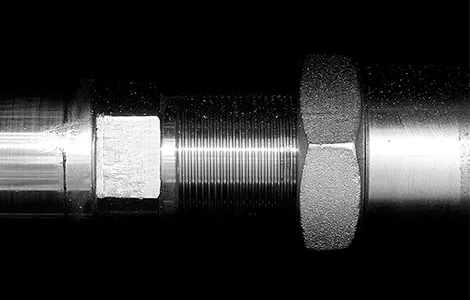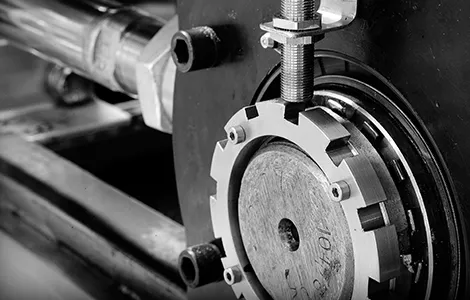The Process of Steel Belt Install Welding with PACE Steel Belt Systems
August 20, 2024
Belt install welding is a critical process in various industrial applications, particularly in sectors that rely on continuous and seamless operations like baking and manufacturing. For conveyor belt manufacturers in Europe, ensuring the integrity and longevity of a carbon steel belt through precise welding is paramount. This blog post will explore the detailed steps involved in belt install welding, with two time-lapse videos that demonstrate the process: the first focusing on the welding procedure itself, and the second on the cleaning and finishing stages.
1. Preparation: Laying the Groundwork for Success
Material Preparation:
Before any welding can commence, the first step is to verify the specifications of the steel belt. This includes checking the thickness, width, and material composition to ensure compatibility with the intended application. For example, in a bakery setting, the belt must meet specific criteria to handle the various stages of the baking process effectively.
The ends of the belt where the weld will be made are meticulously cleaned to remove any dirt, oil, or contaminants. This step is crucial as any impurities could compromise the weld quality, leading to potential failures down the line.
2. Alignment and Setup: Precision is Key
Positioning the Belt:
The belt ends are placed on a flat, stable surface to ensure proper alignment. Accurate alignment is essential to maintain the flatness and level of the belt once it is welded. This step is particularly important in industrial process solutions where even slight deviations can lead to operational inefficiencies.
The new belt is then carefully pulled through the oven to the desired position for welding. A specialist clamping device is used to hold the belt ends firmly in place. This bespoke clamping ensures there is no movement during the welding process, which is vital for achieving a strong, consistent weld.
Gap Setting:
Depending on the welding technique and the thickness of the belt, a small gap may be maintained between the belt ends. This gap allows for proper penetration and bonding during the welding process, which is essential for the durability of the steel belt.
3. Welding Process: The Core of the Operation
Selection of Welding Method:
For steel belts, particularly those with a thickness ranging from 0.6mm to 3.0mm, TIG welding (Tungsten Inert Gas) is often the preferred method. TIG welding is chosen for its precision and control, making it ideal for thin materials that require delicate handling.
Welding Parameters:
Before starting, the appropriate welding parameters, such as voltage, current, and speed, are set based on the belt's thickness and the selected welding method. These settings are critical to ensuring a strong and consistent weld.
Execution:
The welding begins at one end of the belt and moves steadily towards the other. Maintaining a consistent bead and ensuring adequate penetration is key to creating a strong joint. When using TIG welding, it’s important to keep a steady arc length and apply filler material as necessary to reinforce the weld.
This time-lapse video shows the precise and methodical welding process, capturing the skill and attention to detail required to ensure a flawless weld.
4. Post-Welding Procedures: Ensuring Quality and Safety
Inspection:
Once welding is complete, the weld is visually inspected for any defects such as cracks, porosity, or incomplete fusion. In some cases, non-destructive testing (NDT) methods like dye penetrant or ultrasonic testing are employed to ensure the integrity of the weld.
Following the welding, the cross-weld seam undergoes annealing using Oxygen and Acetylene. This heat treatment process helps relieve any stresses in the material, ensuring the weld is durable and stable.
Cleaning and Finishing:
The next step involves removing any slag or oxidation from the weld area using specialist tools such as grinders and band polishing equipment. This cleaning process is essential, particularly in environments like bakeries where hygiene is crucial.
The weld bead is then smoothed out, often using a hammering technique, to ensure a uniform surface. This step is critical in applications where the belt will come into direct contact with food products, as it helps bring the flatness tolerances within the required parameters.
This time-lapse video showcases the cleaning and finishing process, highlighting the meticulous efforts taken to ensure the belt meets the highest standards of quality and hygiene.
5. Final Quality Check: Ensuring Long-Term Reliability
Dimensional Verification:
The final step involves checking the belt for any warping or distortion that may have occurred during the welding process. Ensuring that the belt maintains its original dimensions and flatness is crucial for its performance in the industrial process.
Mechanical Testing:
In some cases, tensile or fatigue testing is performed to verify the strength and durability of the weld. This testing ensures that the belt can withstand the rigors of continuous use, which is especially important in demanding industrial environments.
Conclusion
Belt install welding is a precise and critical process that requires skilled personnel, adherence to industry standards, and the right equipment. By following these steps and utilising the appropriate techniques, conveyor belt manufacturers in Europe can ensure the production of durable, hygienic, and reliable carbon steel belts, essential for seamless industrial process solutions.
Be sure to watch the embedded time-lapse videos to see the entire process in action, from welding to the final finishing touches, demonstrating the meticulous care and expertise required at every step.

